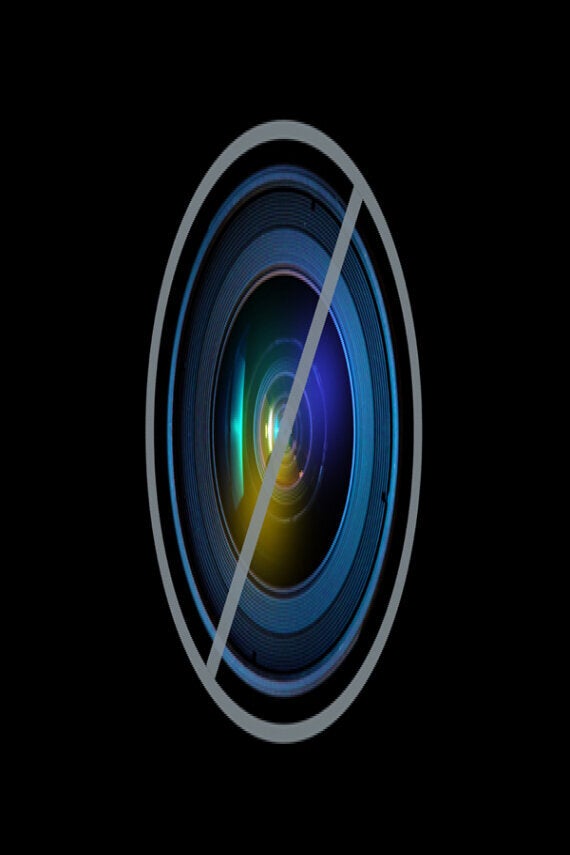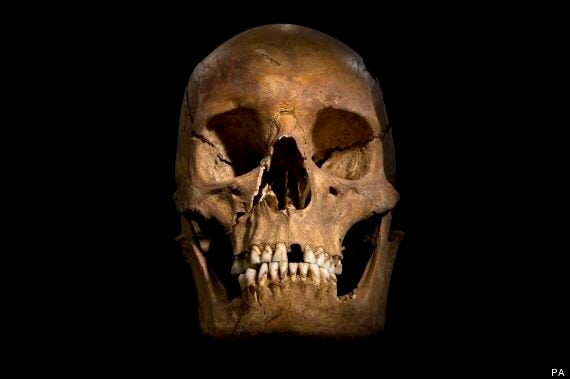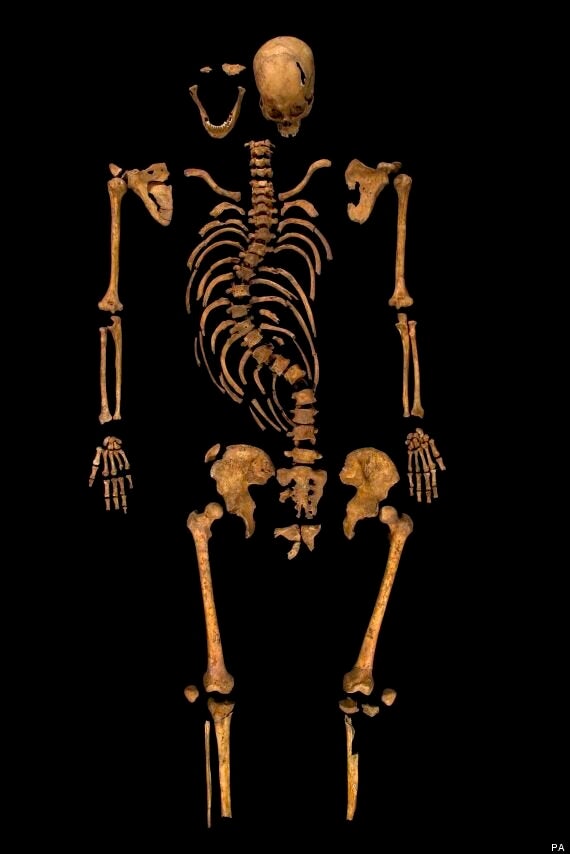William Shakespeare made much of Richard III’s spinal deformity, calling him a “bunch-backed toad” but a new study has shown the king was hardly affected by his condition.
Scientists who carried out scans of the king's kinked spine found it had a "well balanced curve" that could have been concealed under clothes or armour.
Unlike the hunchback depictions seen on stage and screen, his head and neck would have been straight, not tilted to one side, and there was also no evidence that he had a limp.

A 3D model showing the kink in Richard III's spine, as created by scientists at the University of Leicester
The findings are supported by accounts written when Richard III was alive describing him as being "comely enough" and even "handsome".
Scientists carried out a 3D reconstruction of the king's spine which showed 65 to 85 degrees of "scoliosis", or sideways bending, to the right. It was also twisted into a "spiral" shape.
But despite having one shoulder slightly higher than the other and a short trunk in comparison with his arms and legs, the defects would not have handicapped him too much.
Dr Phil Stone, chairman of the Richard III Society, said: "Examination of Richard III's remains shows that he had a scoliosis, thus confirming that the Shakespearean description of a 'bunch-backed toad' is a complete fabrication - yet more proof that, while the plays are splendid dramas, they are also most certainly fiction not fact.

The skull of Richard III
"History tells us that Richard III was a great warrior. Clearly, he was little inconvenienced by his spinal problem and accounts of his appearance, written when he was alive, tell that he was 'of person and bodily shape comely enough' and that he 'was the most handsome man in the room after his brother, Edward IV'."
Experts found that DNA from the bones matched that of descendants of the monarch's family "beyond reasonable doubt".
For the new study, published in The Lancet medical journal, researchers conducted a detailed analysis of the skeleton's spinal column.
Information from computed tomography (CT) X-ray scans and a 3D printer were used to create a plastic replica of the spine, which was photographed from 19 different directions.
The images were combined to produce an interactive picture that could be made accessible on websites.

Richard III's complete skeleton
Dr Jo Appleby, from the University of Leicester's School of Archaelogy and Ancient History, who led the research, said: "The major finding we have made is being able to reconstruct the three-dimensional nature of the scoliosis and understand what it would have looked like.
"Obviously, the skeleton was flattened out when it was in the ground. We had a good idea of the sideways aspect of the curve, but we didn't know the precise nature of the spiral aspect of the condition.
"The arthritis in the spine meant it could only be reconstructed in a specific way, meaning that we can get a very accurate idea of the shape of the curve. It's really good to be able to produce this 3D reconstruction rather than a 2D picture, as you get a good sense of how the spine would have actually appeared.

A portrait of King Richard III
"Although the scoliosis looks dramatic, it probably did not cause a major physical deformity. This is because he had a well-balanced curve. The condition would have meant that his trunk was short in comparison to the length of his limbs, and his right shoulder would have been slightly higher than the left, but this could have been disguised by custom-made armour and by having a good tailor.
"A curve of 65-85 would not have prevented Richard from being an active individual, and there is no evidence that Richard had a limp as his curve was well balanced and his leg bones were normal and symmetric."
Previous research has shown that Richard III would have been about 5ft 8in tall without his deformity, about average for a medieval man. But his condition meant that he would have appeared several inches shorter.
People with similar levels of scoliosis today often undergo spine-straightening surgery.